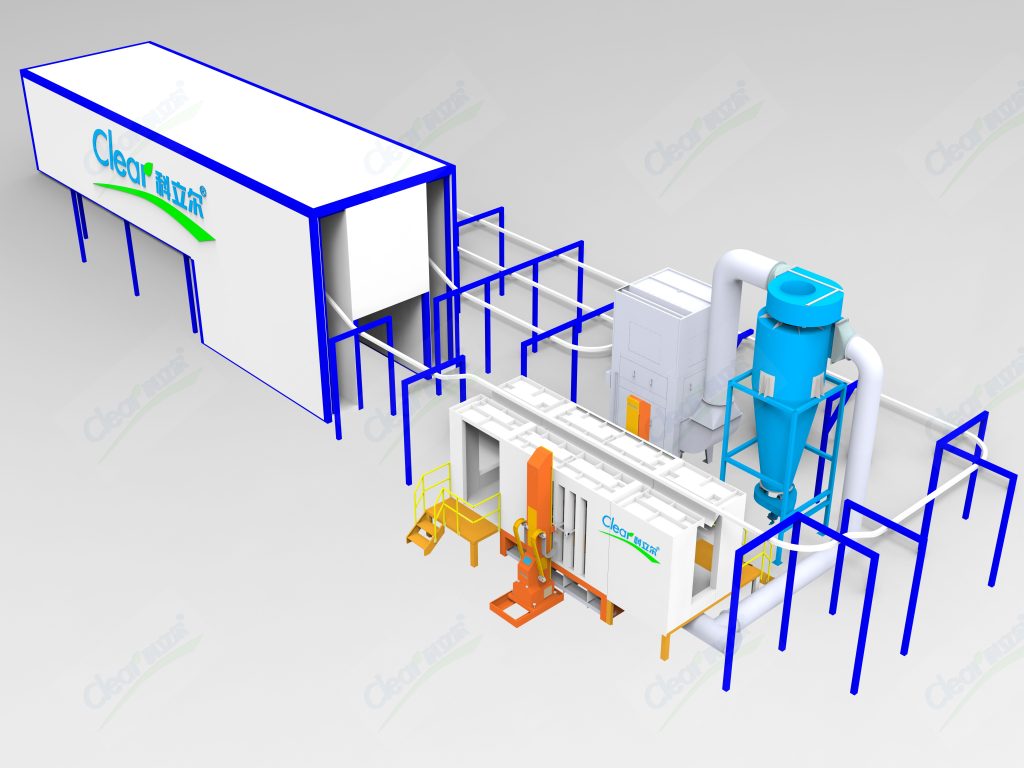1. Surface Preparation Issues
– Contamination:
– Cause: Residual oils, dust, or fingerprints on the surface.
– Solution: Implement a multi-stage cleaning process, including solvent degreasing and phosphating. Use a lint-free cloth for final wipe-downs.
– Inadequate Abrasive Blast:
– Cause: Insufficient or uneven blasting can leave a rough surface.
– Solution: Use appropriate media (e.g., aluminum oxide) and ensure consistent blasting pressure and technique to achieve a uniform profile.
– Oxidation:
– Cause: Exposure to moisture can lead to rust and corrosion.
– Solution: Store wheels in a controlled environment and apply a protective coating immediately after cleaning to prevent oxidation.
2. Coating Issues
– Poor Flow and Leveling:
– Cause: Incorrect powder characteristics or application parameters.
– Solution: Select powders with excellent flow properties and ensure optimal spray distance (6-12 inches) and angle for even coverage.
– Orange Peel Effect:
– Cause: Too thick of a layer or incorrect curing temperature.
– Solution: Adjust the thickness of the application and verify the curing oven temperature with calibrated thermocouples to ensure proper heat distribution.
– Color Matching:
– Cause: Variability in powder batches or application inconsistencies.
– Solution: Utilize color formulation software for consistency and conduct regular batch testing to ensure uniformity.
3. Powder Handling Issues
– Moisture Absorption:
– Cause: Improper storage conditions leading to clumping or flow issues.
– Solution: Store powders in airtight containers in a cool, dry place and use desiccants to reduce humidity exposure.
– Static Charge Issues:
– Cause: Inconsistent electrostatic application leading to uneven coverage.
– Solution: Ensure proper grounding and adjust the electrostatic settings based on the powder’s characteristics. Conduct regular maintenance checks on the electrostatic equipment.
4. Spray Gun and Equipment Issues
– Wear and Tear of Spray Guns:
– Cause: Continuous use leads to degradation of parts.
– Solution: Regularly inspect and replace nozzles and electrodes to maintain consistent application quality.
– Inconsistent Airflow:
– Cause: Clogged air filters or hoses.
– Solution: Implement a routine maintenance schedule for air supply systems, checking filters and connections for blockages.
5. Curing Process Issues
– Over-Curing:
– Cause: Excessive time or temperature in the oven.
– Solution: Use thermal imaging to monitor heat distribution and verify that the curing cycle adheres to the powder manufacturer’s specifications.
– Under-Curing:
– Cause: Insufficient curing time leading to weak coatings.
– Solution: Implement a temperature and time log for each batch to ensure all parts meet curing requirements.
6. Conversion Oven Impact
– Temperature Uniformity:
– Impact: Conversion ovens provide consistent heating, which is crucial for even curing of the powder coating.
– Solution: Regularly calibrate the oven to maintain uniform temperatures and minimize hot or cold spots.
– Conversion Efficiency:
– Impact: The conversion process can enhance the chemical bonding of the powder, resulting in improved durability.
– Solution: Optimize the conversion process parameters to align with the powder specifications for the best results.
– Environmental Control:
– Impact: Maintaining a controlled environment in conversion ovens can prevent contamination and defects in the final product.
– Solution: Ensure proper ventilation and air filtration systems to keep the oven environment clean.
7. Post-Curing Inspection
– Adhesion Failure:
– Cause: Poor surface preparation or incorrect curing.
– Solution: Conduct cross-hatch adhesion tests and ensure surface preparation techniques are strictly followed.
– Surface Defects:
– Cause: Environmental factors during curing, such as drafts or contamination.
– Solution: Maintain a controlled environment during curing and regularly inspect the curing chamber for cleanliness.
Conclusion
By understanding and addressing these detailed issues, including the specific impact of conversion ovens, you can enhance the quality and durability of powder-coated automotive wheels. Continuous training of personnel and investment in equipment maintenance will further improve production efficiency and product quality. If you have any specific scenarios or further questions, feel free
share this page

